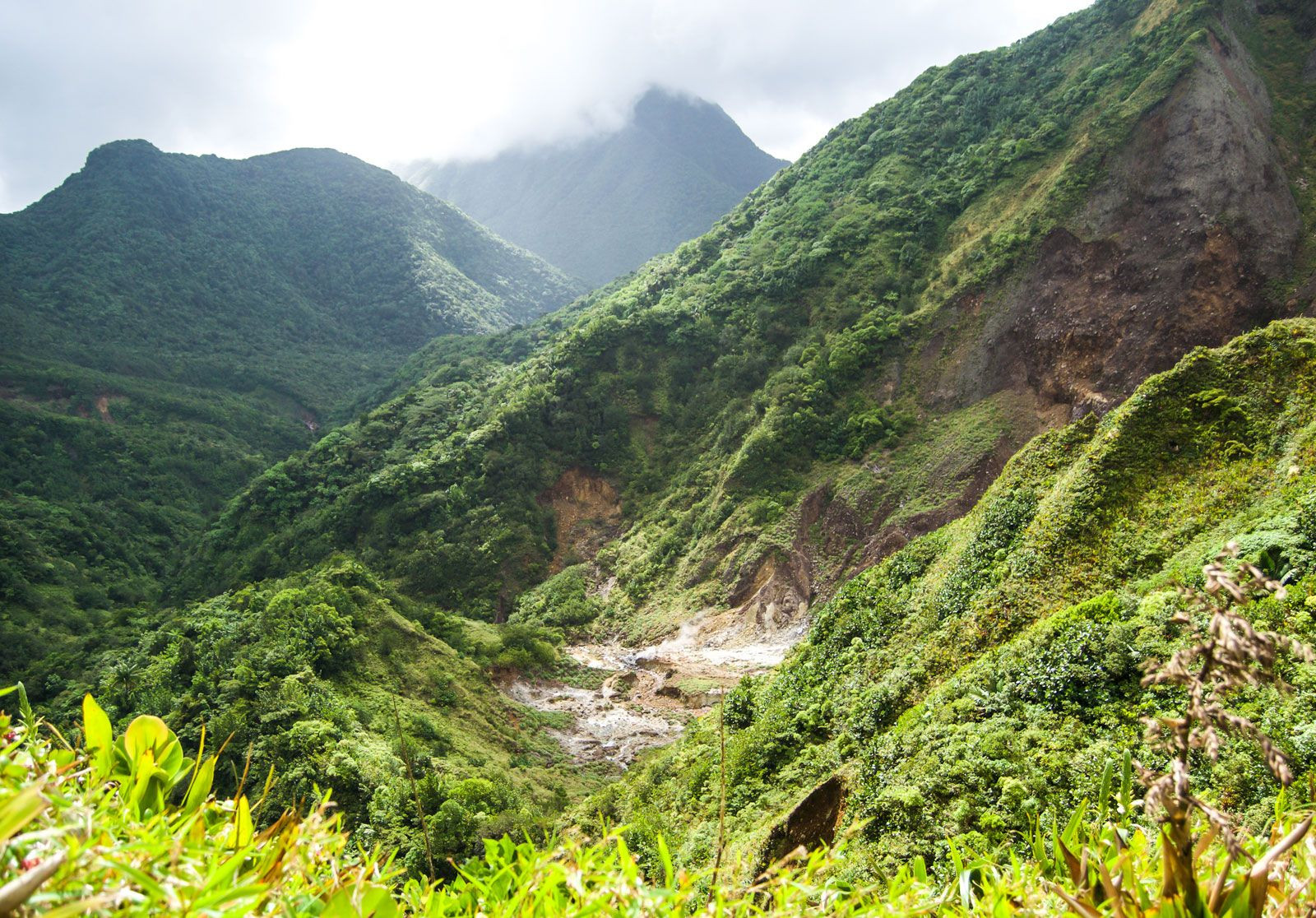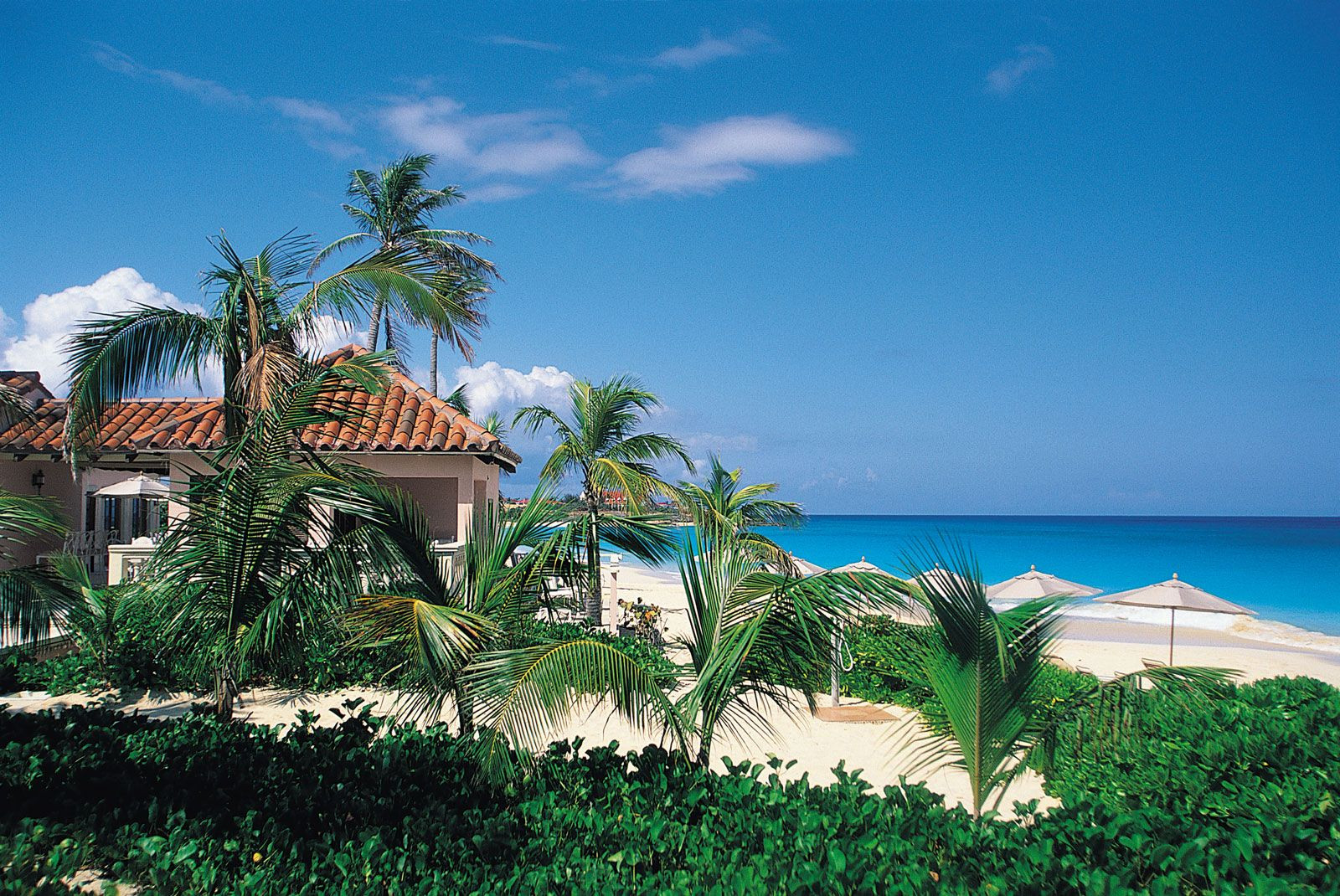The term “West Indies” conjures images of stunning beaches, vibrant cultures, and a rich history. But Where Are The West Indies exactly? This island archipelago, famed for its diverse landscapes and lively spirit, stretches across a vast expanse, forming a bridge between North and South America. Let’s embark on a journey to pinpoint the location of the West Indies and delve into what makes this region so geographically and culturally unique.
The West Indies are a crescent-shaped group of islands extending over 2,000 miles (3,200 km). They act as a natural divider between the Gulf of Mexico and the Caribbean Sea to the west and south, and the expansive Atlantic Ocean to the east and north. Starting from close to the peninsula of Florida in the United States, the island chain curves southeastward for about 1,200 miles (1,900 km), then bends 500 miles (800 km) south, and finally stretches west along the northern coast of Venezuela on the South American mainland.
Aerial view of the Caribbean archipelago showing the West Indies island chain.
Geographically, the West Indies are broadly categorized into three main divisions, each with distinct characteristics:
The Greater Antilles: Islands of Size and History
The Greater Antilles are the larger islands in the western part of the West Indies. This division includes some of the most well-known Caribbean islands:
- Cuba: The largest island in the Caribbean, known for its rich history and vibrant culture.
- Jamaica: Famous for its reggae music, stunning beaches, and lush landscapes.
- Hispaniola: An island shared by two nations, Haiti to the west and the Dominican Republic to the east, each with its own unique identity and history.
- Puerto Rico: A U.S. territory that blends American and Caribbean cultures.
These islands are characterized by their size and diverse landscapes, ranging from mountains to coastal plains. Their geological structure is rooted in an ancient chain of folded and faulted mountains, part of a system that once stretched from Central America across the Caribbean.
Coastal landscape of Pointe des Chateaux in Guadeloupe, a French Caribbean island.
The Lesser Antilles: A Chain of Diverse Islands
East and south of the Greater Antilles lie the Lesser Antilles, a long arc of smaller islands. This division is further subdivided into the Leeward and Windward Islands and includes a diverse collection of territories and nations:
- Virgin Islands: Divided into the U.S. Virgin Islands and the British Virgin Islands, known for sailing and pristine waters.
- Anguilla: A British overseas territory famed for its beautiful beaches and tranquil atmosphere.
- Saint Kitts and Nevis: A dual-island nation offering volcanic landscapes and rich history.
- Antigua and Barbuda: Known for its numerous beaches and sailing culture.
- Montserrat: A British overseas territory with an active volcano.
- Guadeloupe: A French overseas region offering diverse landscapes and Creole culture.
- Dominica: The “Nature Island of the Caribbean,” known for its rainforests and natural hot springs.
- Martinique: Another French overseas region, famous for its volcanic landscapes and French-Caribbean culture.
- Saint Lucia: Recognizable by its iconic Pitons, volcanic spires rising from the sea.
- Saint Vincent and the Grenadines: A multi-island nation offering stunning sailing and diving opportunities.
- Barbados: An independent island nation known for its beaches, rum, and British colonial heritage.
- Grenada: The “Spice Isle,” known for its nutmeg and other spices.
The Lesser Antilles are formed by a mostly submerged chain of mountains, creating a double arc of islands. The inner arc is volcanic, with some active volcanoes, while the outer arc consists of flatter, limestone islands.
Sulphur Fumaroles in Dominica, highlighting the volcanic nature of the Lesser Antilles.
Other Island Groups: Extending the West Indies
Beyond the Antilles, the West Indies also encompass other island groups located on the continental shelves of North and South America:
- The Bahamas: A vast archipelago of islands and cays northeast of Cuba, known for its clear waters and resorts.
- Turks and Caicos Islands: Southeast of the Bahamas, known for luxury tourism and diving.
- Trinidad and Tobago: Located close to Venezuela, these islands are geographically part of the South American shelf and boast diverse ecosystems and cultures.
- Aruba, Curaçao, and Bonaire: The “ABC islands” off the coast of Venezuela, part of the Kingdom of the Netherlands, known for their Dutch influence and arid landscapes.
While geographically separate, Bermuda, located further north in the Atlantic, is often culturally and historically linked to the West Indies.
Climate and Environment: A Tropical Paradise
The West Indies enjoy a tropical maritime climate, characterized by warm temperatures year-round. Daily highs range from the mid-80s°F (upper 20s°C) in the winter months to the upper 80s°F (low 30s°C) in the summer. The region experiences both wet and dry seasons, with rainfall varying significantly across the islands, from 30 to over 200 inches annually, especially on higher peaks exposed to moisture-laden trade winds. Tropical cyclones, known as hurricanes, are frequent between August and October.
The original lush forests of the West Indies have been significantly altered by human activity, particularly through deforestation for sugar plantations and agriculture. However, diverse ecosystems still exist, including mangrove swamps, semi-deciduous woodlands, tropical rainforests, and montane forests. The region is home to a rich variety of plant and animal life, including indigenous species and a wealth of marine creatures in the surrounding seas.
Serene beach scene in Anguilla, showcasing the typical Caribbean coastal beauty.
People and Culture: A Blend of Influences
The population of the West Indies is remarkably diverse, a legacy of its colonial history and plantation-based society. Descendants of enslaved Africans form a significant part of the population, along with people of European (Spanish, French, British, Dutch) and mixed ethnicity. Creole languages, born from European languages mixed with African and West Indian tongues, are widely spoken, alongside Spanish, English, French, and Dutch.
The culture of the West Indies is a vibrant tapestry woven from African, European, American Indian, and Asian influences. This is reflected in lively carnivals, diverse music genres like reggae, and a rich literary tradition that explores themes relevant to the Caribbean experience.
Lush tropical rainforest on Saint Lucia with the iconic Piton Mountains in the background.
Economy and Development: Facing Global Markets
The economies of the West Indies, with the exception of Cuba, are largely based on free-enterprise markets. Historically reliant on agricultural exports like sugar and bananas, many islands are diversifying into tourism and manufacturing to reduce vulnerability to global market fluctuations. Tourism has become a major industry, though it can also bring challenges like rising costs of living. Regional cooperation and international trade agreements aim to bolster economic stability and growth in the West Indies.
Panoramic view of San Juan, Puerto Rico, illustrating the urban areas in the West Indies.
Politics and Society: Independence and Global Ties
The political landscape of the West Indies is varied, ranging from independent republics and constitutional monarchies to dependent territories of the United States, United Kingdom, France, and the Netherlands. Many nations gained independence in the latter half of the 20th century. Despite political diversity, many West Indian nations maintain ties with Western countries. Social welfare programs and education systems are generally well-developed, contributing to relatively high standards of living compared to other developing regions.
Agricultural landscape in the Cibao Valley of the Dominican Republic, showing farmland.
A Cultural Tapestry: Carnival and Caribbean Arts
The West Indies are renowned for their vibrant cultural scene. Carnival celebrations, with music, dance, and elaborate costumes, are a highlight of the year across many islands. Reggae music, originating from Jamaica, has achieved global recognition. Caribbean literature and arts reflect the unique blend of historical and cultural influences shaping the region’s identity.
Cruise ship docked at the port of Roseau, Dominica, emphasizing tourism in the region.
In conclusion, the West Indies are located in the Caribbean region, stretching from southeast of Florida to the north coast of South America. They are not just a geographical location, but a vibrant region rich in history, culture, and natural beauty. From the larger islands of the Greater Antilles to the smaller gems of the Lesser Antilles and the outlying island groups, the West Indies offer a diverse and captivating experience for those seeking to explore their unique charm.
Vibrant Carnival parade in Port-au-Prince, Haiti, demonstrating the cultural festivities of the West Indies.


 Anguilla
Anguilla